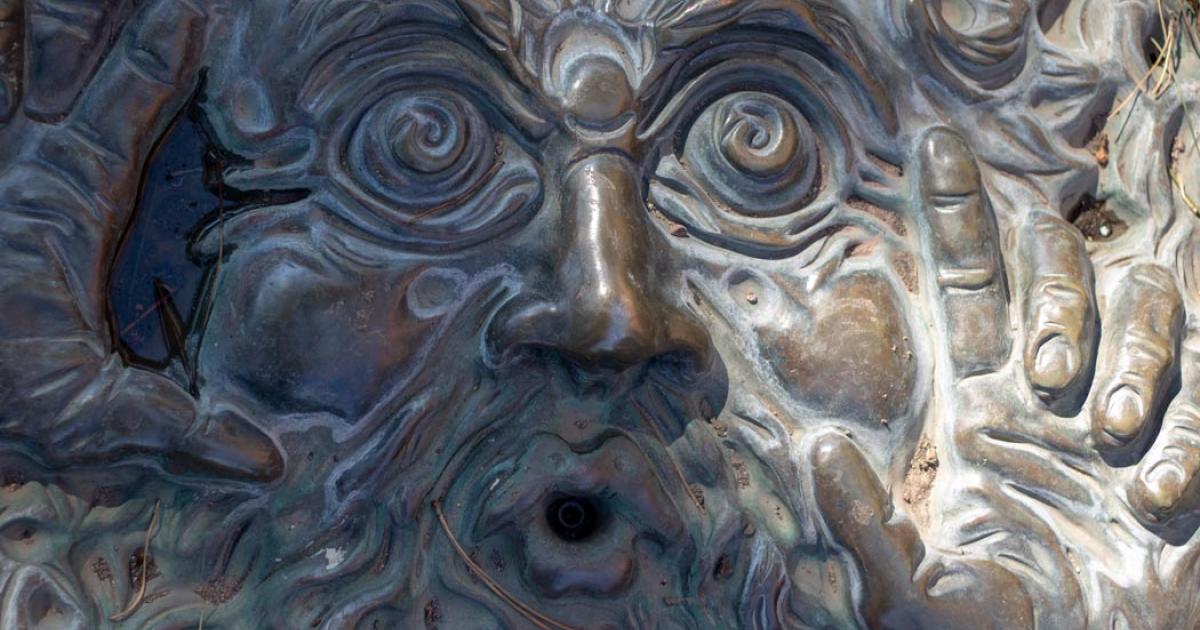
The Anemoi and the Ingenious Invention of the Tower of the Winds
In ancient Greek mythology, there were eight wind gods known as the Anemoi. Each deity was given a cardinal direction from which their wind blew. In addition, the winds were associated with different seasons and weather conditions. The four major Anemoi are Boreas (the north wind who brings the cold winter air), Notus (the south wind who brings the storms of late summer and autumn), Zephyrus (the west wind who brings the light spring and early summer breezes) and Eurus (the east wind). The four minor Anemoi are Kaikias (the north east wind), Apeliotes (the south east wind), Skiron, (the north west wind) and Lips (the south west wind).
These winds are sometimes personified as winged men with symbols that indicated the type of wind that they were bringing. For instance, the north wind, Boreas, is depicted as a man wearing a heavy cloak and blowing through a twisted shell, while Zephyrus is depicted as a youth carrying flowers into the air. The personification of the Anemoi can be seen on one of Athens monuments aptly known as the Tower of the Winds.

An ancient wind god on the Tower of the Wind. (sirylok /Adobe Stock)
The Anemoi on the Tower of the Winds
The Tower of the Winds is said to have been built around 50 BC by a Macedonian astronomer by the name of Andronicus of Cyrrhus. This structure was built as a timepiece and is still standing today. The Tower of the Winds is 12.8 meters (41.99 ft.) in height and 7.9 meters (25.92 ft.) in diameter, and has an octagonal shape. Each of the tower’s sides face a point of the compass and are decorated by friezes depicting the personification of the Anemoi. It was these depictions that gave the tower its name.
- The Future of the Nashtifan Windmills is Blowing in the Wind
- Ehecatl: The Aztec Wind God was Hard to Pin Down
- Greek Gods: The 7 Core Males Exposed

Anemoi, the eight winds of Greek mythology on the Tower of the Winds. (In Praise of Pure Reason)
In order to tell the time, sundials were placed below each frieze. In addition, a clepsydra (water clock) was placed inside the structure. This clock was powered by water flowing from a stream on the Acropolis. Apart from telling the time, the Tower of the Winds could also tell the direction of the wind.
This was achieved through a wind vane that is now lost. This wind vane, which was a piece of bronze depicting the sea god Triton, rotated as the winds changed. Interestingly, the Romans believed that the direction of the winds could be used to foretell the future. Hence, the wind vane would have been as important a feature of the tower as its sundials and water clock.

The Tower of the Winds as it stands today. Source: BigStockPhoto
Alternative Uses for the Tower
Like another of Athens’ famous building, the Parthenon, the Tower of the Winds was used for other purposes over time. During the early Christian period, this building was used as the bell-tower of a Byzantine church. When Athens fell under Ottoman rule, the Tower of the Winds was used by the whirling dervishes as a tekke, which was a place of spiritual retreat and character formation. Evidence that the tower was buried up to half its height at that time may be observed in the Turkish inscriptions that have been found on the structure’s interior walls.

Tower of the Winds, "Dance of the Dervishes", Views of Greece (1821). (Public Domain)
The Anemoi Inspired Some Unique Architecture
The unique architectural design of the Tower of the Winds fascinated Europeans. The earliest description of the tower can be found in the writings of the ancient Roman architect, Vitruvius. In the 16th century, an edition of Vitruvius’ work was produced by Cesare Cesariano and Giovanni Rusconi.
- Zeus and Hera – A Match for the First Couple of Genesis?
- Kamikaze – The Divine Winds that Saved Japan
- Defenders of the Dutch Polders: The Kinderdijk Windmills
This edition contained a fanciful reconstruction of the Tower of the Winds and that image influenced the designs of the 17th century English architects, Christopher Wren and Nicholas Hawksmoor. Yet, it was only in the latter part of the 18th century that an accurate illustration of the tower was published in James Stuart and Nicholas Revett’s The Antiquities of Athens.
Subsequently, the design of the tower has influenced various Neo-Classical European structures such as the 18th century Radcliffe Observatory in Oxford, England and an 1849 tower in Sevastopol in the Crimea. Thus, despite the huge gap in time, the design of the Tower of the Winds has survived, although the buildings inspired by it probably do not serve the same purpose.
Top Image: Anemoi were the Greek gods of the winds. The ingenious Tower of the Winds was built with them in mind. Source: Stephen /Adobe Stock
By Ḏḥwty
References
Encyclopaedia Britannica, 2014. Tower of the Winds. [Online]
Available at: http://www.britannica.com/EBchecked/topic/645205/Tower-of-the-Winds
greeka.com, 2014. Tower of the Winds. [Online]
Available at: http://www.greeka.com/attica/athens/athens-excursions/tower-winds.htm
GuidePal, 2012. Roman Forum and the Tower of the Winds. [Online]
Available at: http://guidepal.com/athens/see--do/roman-forum-and-the-tower-of-the-winds
Regula, d., 2014. Tower of the Winds. [Online]
Available here.
stoa.org, 2014. The Roman Agora & the Tower of the Winds. [Online]
Available at: http://www.stoa.org/athens/sites/romagora.html
Willemsen, D., 2013. Tower of Winds. [Online]
Available at: http://www.sailingissues.com/yachting-guide/tower-of-the-winds.html
















Comments
It stands to reason that the Triton lion weather vane on top should be Reconsructed :) why not ! ?